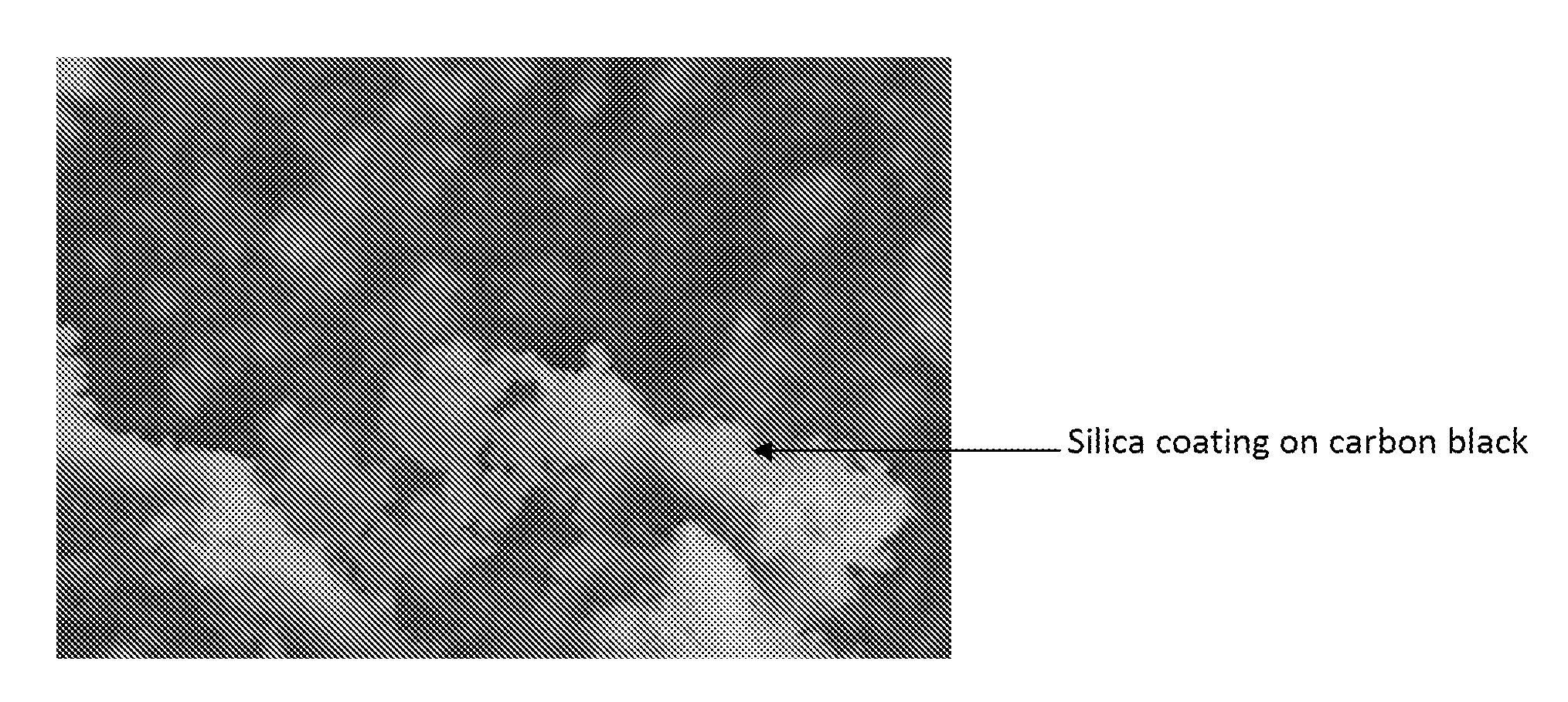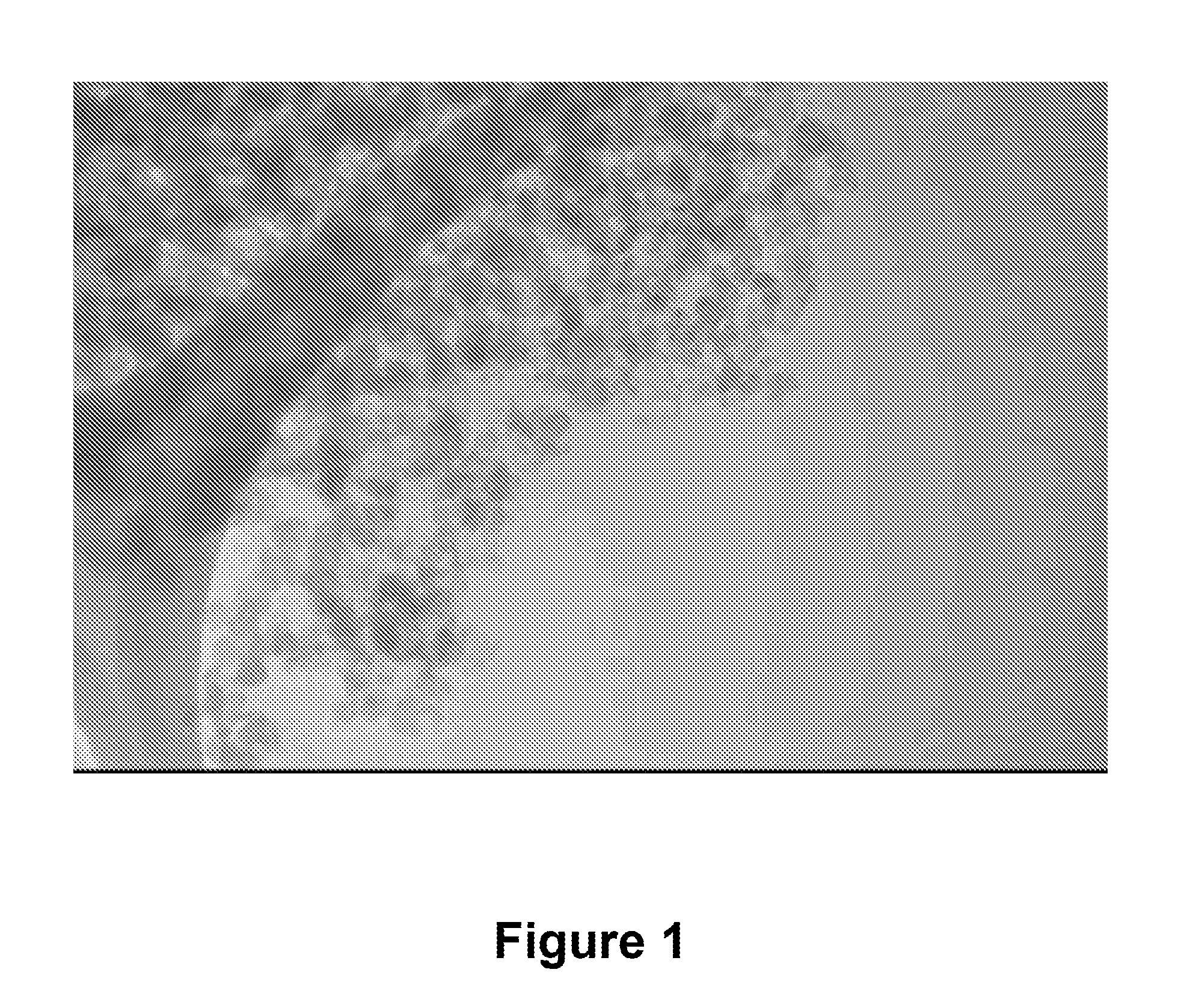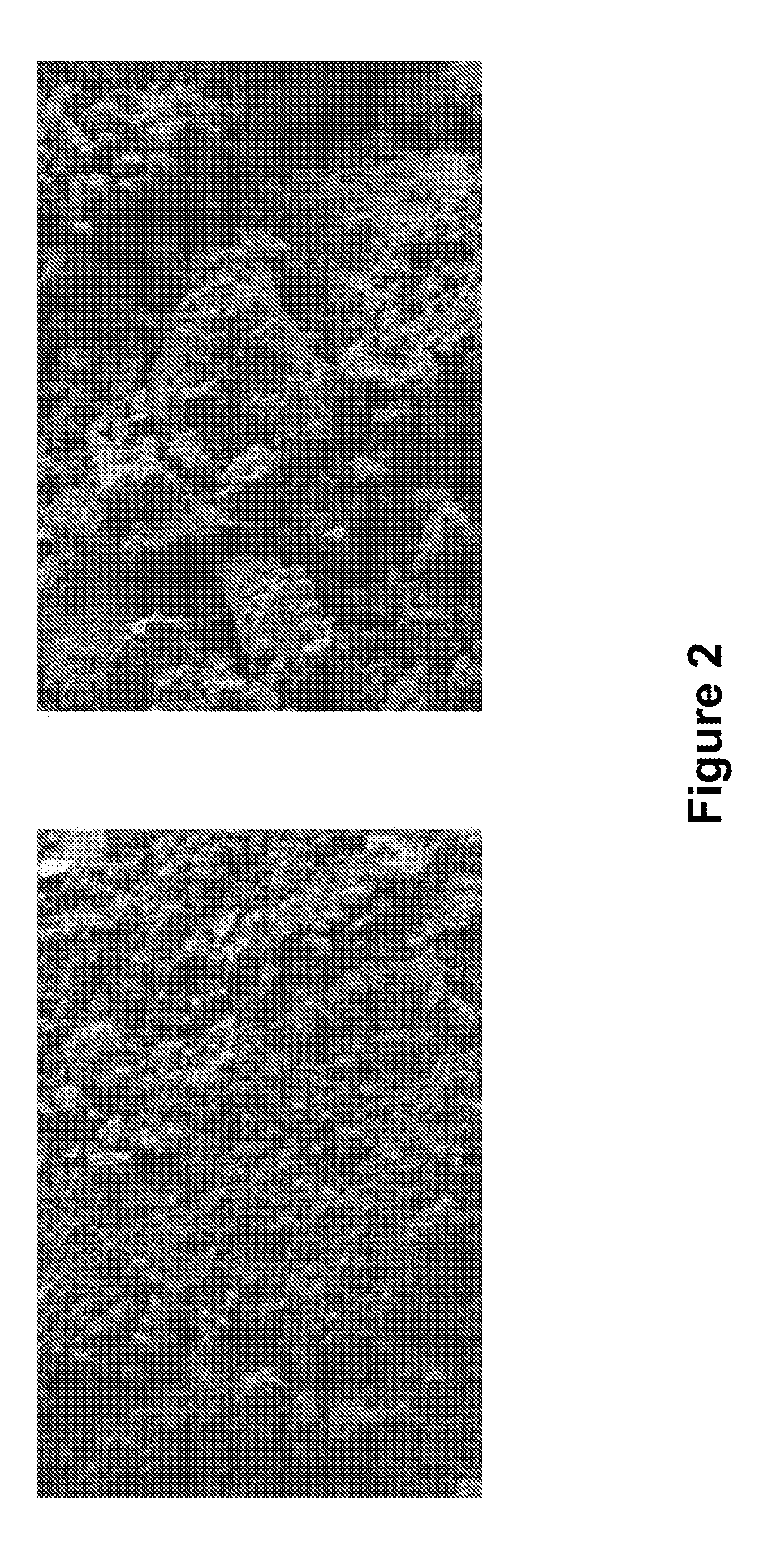Nanoparticle sorbent for efficient mercury remediation from contaminated water
a technology of nanoparticles and sorbents, applied in the direction of cellulosic plastic layered products, other chemical processes, natural mineral layered products, etc., can solve the problems of low concentration of these functional groups, lack of selectivity toward mercury ions, and surface contamination, so as to increase the adsorption efficiency of mercury, high mercury loading, and high removal rate
- Summary
- Abstract
- Description
- Claims
- Application Information
AI Technical Summary
Benefits of technology
Problems solved by technology
Method used
Image
Examples
example 1
Synthesis and Performance of Thiol Group Modified Carbon-Black Based Sorbent
1.a. Surface Modification with Sodium Aluminate
[0030]A typical process for introducing aluminum hydroxide groups on the surface of carbon black is as follows: 60 g of carbon black was dispersed in 5400 mL of water, using a high shear mixer. 1.2 g of sodium aluminate was dissolved in 360 mL of water, in a separate container. The aqueous solution of sodium aluminate was passed through an ion-exchange resin (Dowex-HCR-W2) prior to the addition to carbon black slurry. The pH of the solution was maintained between 9.7 and 9.8 using an aqueous solution of sodium hydroxide and hydrochloric acid. The treated powder was filtered and dried in an oven.
1.b. Surface Modification with Sodium Silicate
[0031]Aluminum hydroxide activated carbon black was further coated with silica. In a typical experiment 25 g of aluminum hydroxide activated carbon black was dispersed in 2250 mL of water using a high shear mixer. The temperat...
example 2
Synthesis and Performance of Calcium Polysulfide (CaSx) Modified Carbon Black Based Sorbent
2.a Synthesis of CaSx-Based Sorbent
[0036]Initially, carbon black was coated with silica, using the method described in 1.a and 1.b. Subsequently, the surface of the silica coated carbon black was modified with calcium polysulfide. In a typical synthesis, 5 grams of silica coated carbon is dispersed in 250 mL of water with 2.15 grams of calcium polysulfide. The solution is mixed for 1.5 hours and then placed in a roto-evaporator to remove all the solvent, resulting in a surface-modified powder. This powder was heat treated at 300° C. for 2 hours in air to decompose the CaSx and to bond sulfur with the silica layer on the surface of the carbon. This prevents the sulfur from potentially going back into the solution. This sample hereafter is designated as C2. The specific surface area of this sample was 163 m2 / g.
2.b Performance of C2 in Removing Mercury from Water
[0037]The efficacy of C2 was teste...
example 3
Synthesis and Performance of Aggregated Mercapto Modified Carbon Black Sorbent
[0038]In order to enable the use of a sorbent in a practical application, the nanoparticles need to be aggregated to 20-50 μm size particles. Further, in order to use the sorbent in either a column or a cartridge, it is preferred that the particles are further aggregated into millimeter size “pieces”. Hence, we modified the method, described in 1.c, to synthesize aggregated mercapto-modified carbon black based sorbent. Initially, silica-coated carbon black (synthesized using the method described in section 1.a and 1.b) was dispersed in ethanol, followed by the addition of tetraethoxysilane (TEOS) and acetic acid. The hydrolization of TEOS leads to aggregation of silica-coated carbon black particles. Subsequently, aggregated silica-coated carbon black particles were functionalized with mercaptosilane using a method similar to the method described in section 1.c. This sample is hereafter designated as C3. FI...
PUM
| Property | Measurement | Unit |
|---|---|---|
| specific surface area | aaaaa | aaaaa |
| size | aaaaa | aaaaa |
| size | aaaaa | aaaaa |
Abstract
Description
Claims
Application Information
 Login to View More
Login to View More - R&D
- Intellectual Property
- Life Sciences
- Materials
- Tech Scout
- Unparalleled Data Quality
- Higher Quality Content
- 60% Fewer Hallucinations
Browse by: Latest US Patents, China's latest patents, Technical Efficacy Thesaurus, Application Domain, Technology Topic, Popular Technical Reports.
© 2025 PatSnap. All rights reserved.Legal|Privacy policy|Modern Slavery Act Transparency Statement|Sitemap|About US| Contact US: help@patsnap.com



